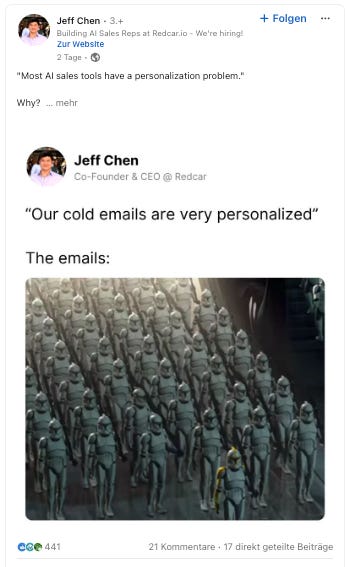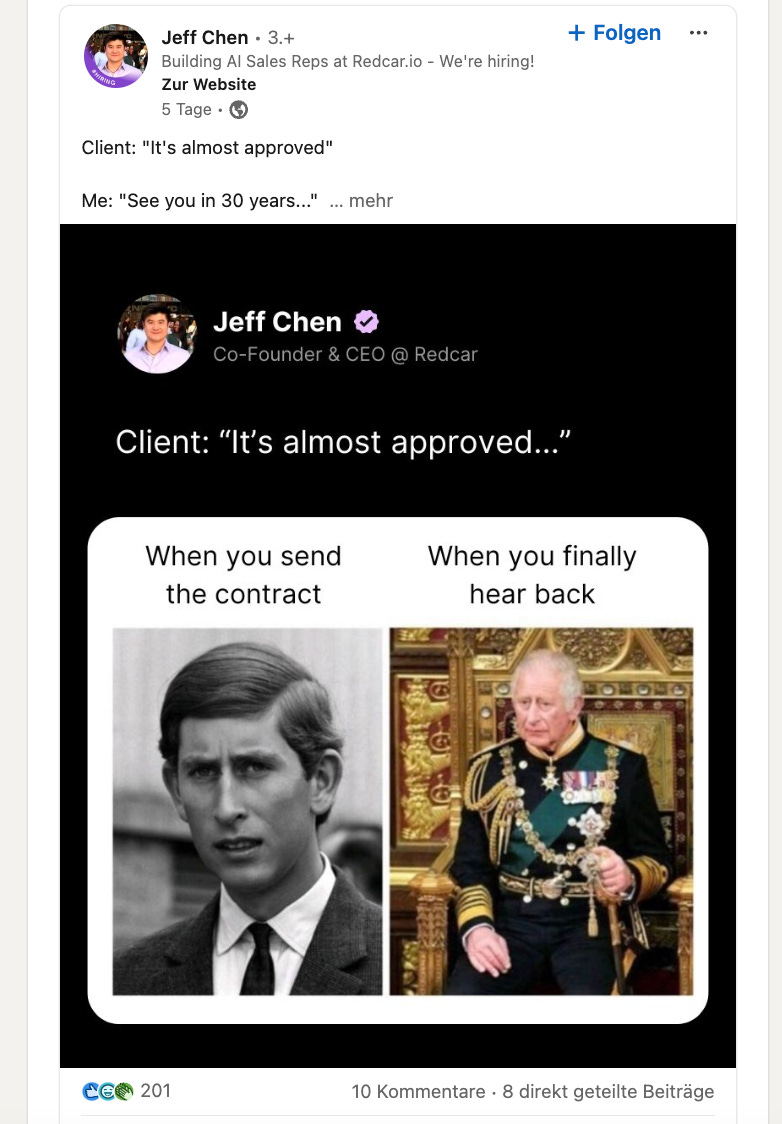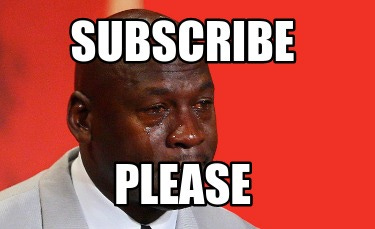This Founder Consistently Goes Viral on LinkedIn
Let's take a look at the startup Redcar.io to see how memes are a valid growth strategy.
Hey there,
Welcome back to Growth Bites — your 1-minute growth hack.
Today, we’re diving into something funny.
While scrolling through the endless stream of cringe on LinkedIn one evening, I stumbled upon a startup called Redcar.
This startup offers an AI-driven B2B sales platform designed to autonomously convert website visitors and cold leads into qualified meetings.
For instance, SaaS startups can leverage Redcar to identify and engage potential customers visiting their websites and even execute targeted outreach to ideal customer profiles.
What caught my attention, though, is how Redcar—or more specifically, its founder—is cleverly creating awareness and driving traffic to the brand.
Memes = Social Media Strategy?
When it comes to early growth strategies, many founders turn to social media.
Personal branding has become the buzzword of not just 2022, but also 2023, 2024, 2025—and probably the years to come.
Everywhere you look, there’s a course for every platform and target group imaginable. And gurus are popping out of every corner of the internet.
At its core, building a personal brand boils down to just two things:
A target group you want to reach
A topic you want to write about
But there are also a zillion nuances you need to pay attention to.
One of these nuances is figuring out how to grab your audience’s attention.
On LinkedIn, for example, this quest for attention often leads to content that make you cringe.
But during one of my recent scrolls, I came across Redcar—or more precisely, its founder Jeff Chen—and it made me stop scrolling.
How This Founder Wins on LinkedIn
Jeff Chen, is doing something super smart.
He is highly active, but his approach isn’t the typical “personal branding strategy of talking about the challenges faced by his target audience”.
No, instead, his entire strategy revolves around memes.
What makes this so clever is that most of these memes focus on sales—a topic that directly resonates with his startup’s audience.
In other words, his strategy attracts exactly the right people.


Judging by his engagement rate it seems like it works
Numbers, Numbers, Numbers
Jeff began posting meme content in September 2024 (at least, that’s what his LinkedIn feed tells me).
After digging into his posts, I noticed that he’s posting almost every day. Since then, his engagement has skyrocketed—from around 25-30 likes per post to some posts now receiving over 1,600 likes.
Now the interesting question is how much traffic & impressions he generates for his startup with this strategy.
Breaking this down by the numbers, it’s challenging to guess from the outside.
💡 These key factors typically influence LinkedIn post performance:
Number of followers of the person or company posting.
Engagement metrics (likes, comments, shares, mentions).
Network reach—who engages with the post and the size of their networks.
LinkedIn’s algorithm, which boosts visibility if a post is deemed relevant and popular.
But let’s make some assumptions:
I found a useful formula for calculating LinkedIn engagement rates from Eric Siew:
Engagement (Likes + Comments) / Views x 100% = Engagement Rate (%)
And according to Keyhole, the average LinkedIn engagement rate is about 3%.
If we take one of Jeff’s recent posts that received 442 likes and 21 comments, we get:
(442 + 21) / Views x 100% = 3%
With some math, this means that this post likely had around 15,400 impressions, which seems realistic based on my own experience.
But Jeff is not only generating impressions.
While his memes grab attention, he takes it a step further and uses the text of his posts to talk about the pain points of his target audience and then presenting “a solution” for it.
This not only positions him as the “funny meme guy” but also establishes his expertise, building credibility with his audience.

Another clever thing Jeff does is linking to his startup, Redcar, in every other post. This likely helps drive a significant amount of traffic to his startup and website.
Let’s break it down:
If just 2% of his impressions convert into website visits, that could mean around 300 visits from a single post.
Considering Jeff posts almost daily and frequently achieves viral reach, this strategy likely results in a substantial and consistent stream of traffic to his site.
💡 According to a study by Econsultancy, LinkedIn is responsible for 64% of all visits from social media channels to corporate websites. Even more impressive, 90% of all social traffic to B2B websites comes from Facebook, Twitter, and LinkedIn, with LinkedIn accounting for more than half.
So, taking all of this into account, Jeff is doing a pretty god job of generating traffic for his startup.
Why Does It Work?
Now that we’ve looked at the numbers, let’s get into why this strategy works so effectively and why memes are more than just a gimmick.
Primarily because they’re easy to consume, humorous, and relatable—especially when they highlight the clichés or shared experiences of your target audience. People naturally engage with content they can relate to, making it much easier to generate likes, comments, and shares.
Additionally, humor helps to humanize brands and their founders, making them more approachable. In contrast, people who rely solely on stats and data often struggle to connect, even if they are highly experienced.
And last but not least, memes break the monotony of typical LinkedIn B2B posts, which often feel overly professional, lack personality—and let’s be honest—can be very cringe.
Final Words
I absolutely love Jeff’s awareness strategy with memes—it’s pure gold and truly resonates with his target audience.
If you’re thinking about adopting a similar approach, make sure your content hits home with your audience.
Focus on understanding their humor and shared experiences. To nail this, you need to put yourself in their shoes, spending time to grasp their clichés and pain points. Only then can you create memes that strike a chord.
Otherwise, memes can fall flat. And let’s face it—nobody likes explaining jokes. Urgh.
That’s it for this issue. Happy growing!
PS: before I forget:




Well analysed, thank you!
Memes really does work well for personal brands! I think not so much for a B2B company page though, unless you're really big. Thank you for this analysis.